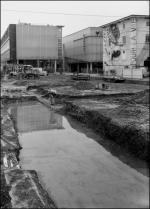|
As de Trèfle As Phot |
Manufactured or assembled in France from 1953 to 1953.
Index of rarity in France: Infrequent (among non-specialized garage sales)
Inventory number: 104
See the complete technical specifications
Chronology of cameras As de Trefle
The 6 x 9 (620) format camera was introduced by the Belgian company Gevaert in collaboration with Kinax. It was initially named Gevaphot. Shortly after, the model was sold to the brand As de Trèfle, which renamed it As Phot.
The lens (mounted on a helical ramp) continued to be called Blue Kinn. An interesting feature is the placement of the viewfinder within a pseudo-rewind button. The shutter has three speeds: 1/25, 1/100 second, and the B (bulb) mode. The lens is a meniscus type, and the aperture has two settings.
In 1953, this camera was priced at 2450 French francs (Caron catalog - Amiens).
The trademarks As Phot and As Flash were registered on April 10, 1953, at the Commercial Court of Seine (427 368 and 427 369) by Société Nouvelle As de Trèfle Produits photographiques (sarl) located at 71, rue de Maubeuge, Paris.


As de Trèfle by Sylvain Halgand, with the collaboration of Hugues and Xavier Lebard and Pierre Gillon,
The text and illustrations on this page are not in the public domain. Reproduction of the content is not allowed without the written permission of Sylvain Halgand and the copyright holders."
 BIOGRAPHY of Edouard Grieshaber (Valence, 1872 - Saint-Maur, 1951)
BIOGRAPHY of Edouard Grieshaber (Valence, 1872 - Saint-Maur, 1951)
by Mr Pierre Gillon, from Société d'Histoire et d'Archéologie "Le Vieux Saint-Maur"
Originating from a family from Fribourg-en-Brisgau (Württemberg) – his grandfather had settled in Besançon as a knitter shortly before 1825 – he was passionate about photography from the age of 16. In 1890, he established the first public photography course in the Tour Saint-Jacques.
He was the founder in Saint-Maur of one of the oldest photographic product factories: in 1897, the company Grieshaber, Warcollier et Cie settled at 3 Avenue de Condé in the former girls' school. It employed around fifty male and female workers for manufacturing gelatin-bromide or silver chloro-bromide plates or papers, roll films, or radiology articles, and had a 25-horsepower steam engine (Bournon).
 In 1907, it became the Société As de Trèfle — named after the brand of photographic plates that Édouard's father had been having manufactured by the Graf house in Le Perreux since 1882. The papers and photographic products of this company would become famous throughout France, as well as in Europe, and as far as Japan and Argentina.
In 1907, it became the Société As de Trèfle — named after the brand of photographic plates that Édouard's father had been having manufactured by the Graf house in Le Perreux since 1882. The papers and photographic products of this company would become famous throughout France, as well as in Europe, and as far as Japan and Argentina.
In 1911, the company acquired the Parisian paper factory Tambour. The original 1000m² factory located at 3 Avenue Mahieu, which disappeared in 1932 due to the widening of Avenue de Condé, was joined in 1923-1925 by a new model factory, allowing the plates and paper manufacturing to be consolidated on a one-hectare plot at 57 Avenue de Condé, expanded in 1927 and 1930. The company headquarters were transferred there on April 15th of that year.
The company also established a store in Paris and took a one-third stake in a film manufacturing company in Sully-sur-Loire, which operated from 1928 until the end of 1939."
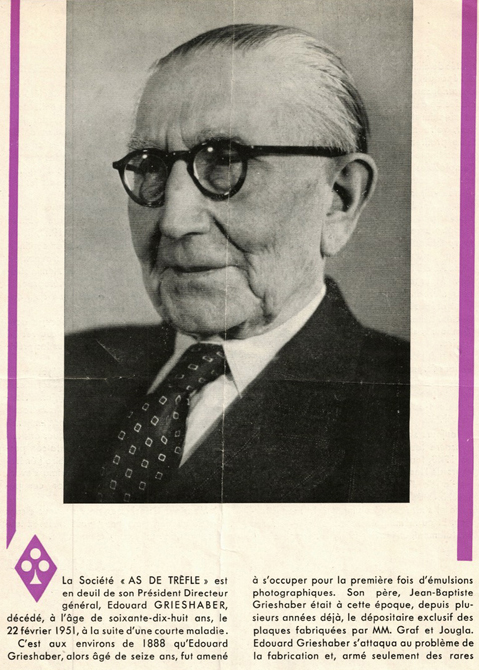 At its liquidation, As de Trèfle repatriated the film production to Saint-Maur in April 1940. However, in September, the ban on all outdoor photography devastated the market for photosensitive materials, while the reinstallation of equipment from Sully was ongoing. Already running at a deficit in 1939, As de Trèfle could hardly refuse to supply products to a company in Frankfurt and a few industrial companies working for the Germans. This production accounted for nearly 20% of its revenue in 1942. At the end of July 1943, a major fire destroyed most of the buildings – which were not insured – and left the employees unemployed, whom Édouard Grieshaber compensated. The police attributed the fire to Eugène Cas, also known as Maurice, a communist militant and active resistance member, a member of an FTP (Francs-Tireurs et Partisans) group tasked with punishing traitors and collaborators and responsible for numerous bombings. Eugène Cas was arrested in December and executed at Mont Valérien in March 1944.
At its liquidation, As de Trèfle repatriated the film production to Saint-Maur in April 1940. However, in September, the ban on all outdoor photography devastated the market for photosensitive materials, while the reinstallation of equipment from Sully was ongoing. Already running at a deficit in 1939, As de Trèfle could hardly refuse to supply products to a company in Frankfurt and a few industrial companies working for the Germans. This production accounted for nearly 20% of its revenue in 1942. At the end of July 1943, a major fire destroyed most of the buildings – which were not insured – and left the employees unemployed, whom Édouard Grieshaber compensated. The police attributed the fire to Eugène Cas, also known as Maurice, a communist militant and active resistance member, a member of an FTP (Francs-Tireurs et Partisans) group tasked with punishing traitors and collaborators and responsible for numerous bombings. Eugène Cas was arrested in December and executed at Mont Valérien in March 1944.
Despite this, production resumed, and the company's prosperity was evident after the Liberation with a 50% increase in the workforce and an increase in capital from 3 million before the war to 20 million francs in 1948. At that time, the Committee for the Confiscation of Illicit Profits estimated illicit profits made during the Occupation at 75,000 francs, and the case was closed as this amount would have represented only 0.2% of As de Trèfle's overall revenue.
The company operated until the founder's death and then that of his widow in 1953. Acquired by the optical glass group Lissac, the site became home to the SIL company (Société industrielle de lunetterie), which manufactured the Amor eyeglass frames, invented in 1946, and the LOR company (Lentilles ophtalmiques rationnelles), established in 1959, which produced unbreakable lenses. The merger of SIL and LOR was named SILOR in 1968 and later became ESSILOR from 1972 until the closure of the Saint-Maur factory in 2013.
Édouard Grieshaber was very active in professional organizations. He served as the president of the chambre syndicale des industries photographies from 1908 to 1922. He was also an administrator and co-founder in 1924, alongside Léon Gaumont, Charles Pathé, and Louis Lumière, of the École technique de Photographie et Cinématographie, a mixed school that opened in 1926 on Rue de Vaugirard and later became the École nationale supérieure Louis Lumière. He was also passionate about the history of the old neighborhood and served as the vice-president of "Vieux Saint-Maur" from 1948 to 1951.
References: Bournon, Saint-Maur-des-Fossés, 1905, p. 146-147; obituary in Le Vieux Saint-Maur, No. 24, 1951, p. 133, and in As de Trèfle magazine, No. 18, May 1951; information and archives from the Grieshaber-Lebard family (including historical records from 1932 and 1942 and production notebooks); F. Denoyelle, "Photography and Collaboration: Purges in the Photography Industry and Agencies," Histoire et archives, No. 9, 2001, p. 125-165; www.museedelaresistanceenligne.org.
Saint-Maur factory, avenue de Condé


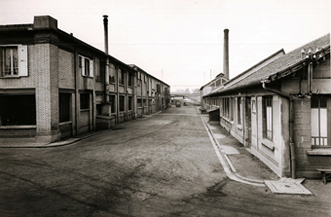
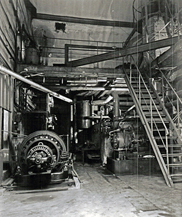


PLATES
 Reporter
Reporter
Plaque universelle anti-halo Ortho
Box of 12 plates 10 x 15 cm
Grieshaber Frères et Cie As de Trèfle's logo is there, but brand name doesn't appear.
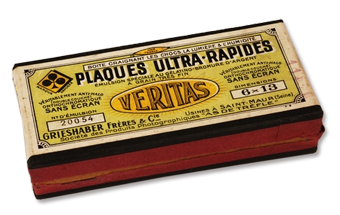 Veritas
Veritas
Plaques Ultra-Rapides
Émulsion spéciale au gélatino-bromure d'argent à grain très fin
Box of 12 plates 6 x 13
Grieshaber Frères et Cie Société des Produits Photographiques As de Trèfle
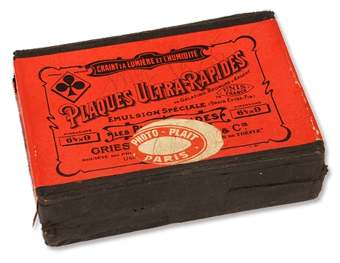 Plaques Ultra-Rapides
Plaques Ultra-Rapides
Émulsion spéciale (Grain extra-fin)
Box of 12 plate 6,5 x 9
Grieshaber ... et Cie Société des Produits Photographiques As de Trèfle
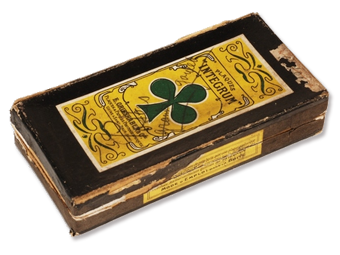 Integrum
Integrum
6 x 13 Plates
E. Grieshaber et Cie
PAPER
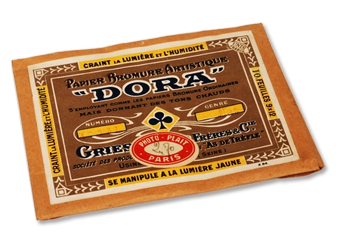
Dora
Papier Bromure Artistique DORA
s'employant comme les papiers Bromure Ordinaires, mais donnant des tons chauds. Se manipule à la lumière jaune.
Set of 10 sheets 9 x 12
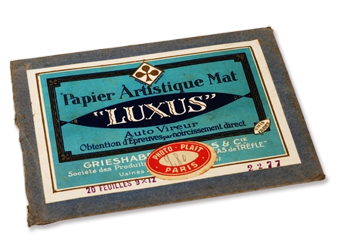 Luxus
Luxus
Papier Artistique Mat
Auto Vireur Obtention d'épreuves par noircissement direct
Set of 20 sheets 9 x 12
CAMERAS
Several cameras bear the brand As de Trèfle. As de Trèfle was not the manufacturer but aimed to supplement its range of films, plates, chemicals, to offer photographers a comprehensive range. This reflects a rather common approach among support manufacturers.
MISC.
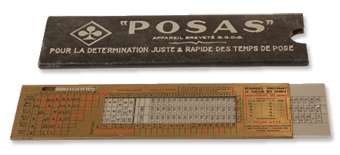
Posas
Slipstick considering the month, day (from 1 to 32...), sensitivity (between 200 and 700 H&D). Aperture ranges from 2 to 28 (and 1 to 32 in the Uniform System).
For 'summer time, read in the table the one that precedes your watch's time.'"
ADS
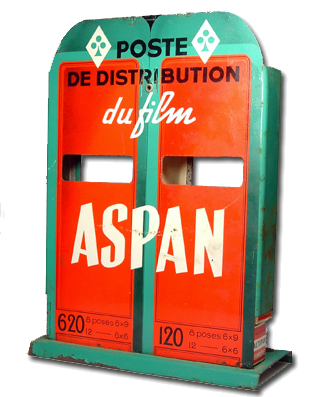 Dispenser for Aspan film. One column for the 620 format, the other for the 120.
Dispenser for Aspan film. One column for the 620 format, the other for the 120.ASPAN

Collections A. Saudax, S. Halgand, Famille.
Interesting links or bibliography :
| Sur mes-appareils-photos.fr, suggested by Eric Carlhan |
Add a link or element of bibliography, a picture taken with this camera, a picture of box or an ads about this camera
Your photos taken with the same camera:
Cameras from Ebay France (As de Trèfle) (Uploaded each 3 hours)






